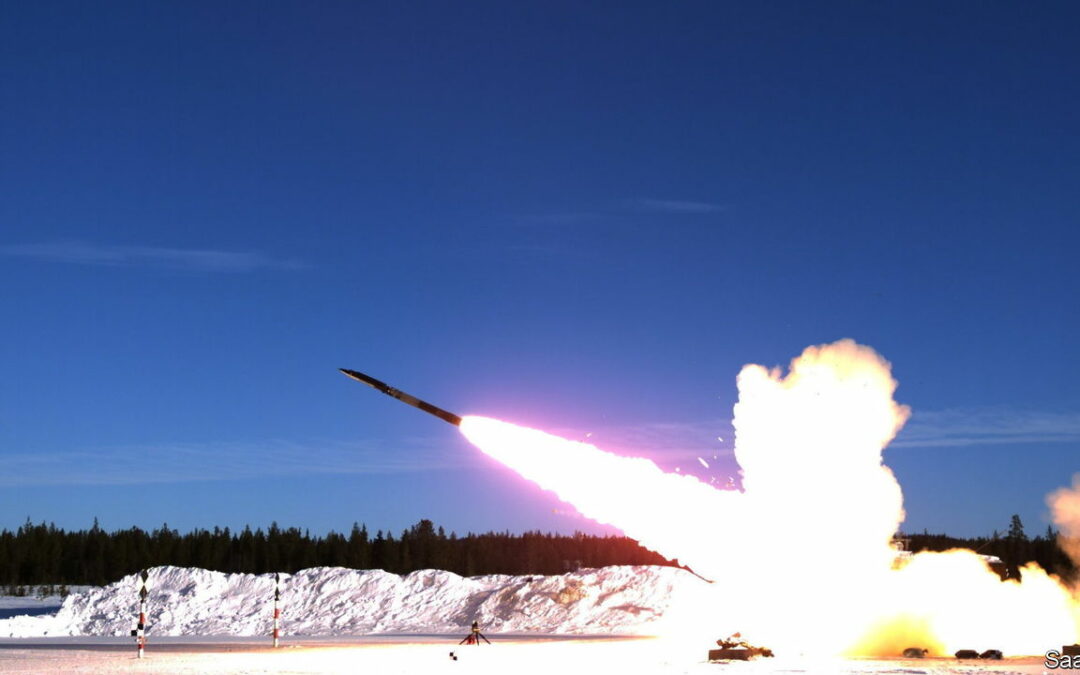FIRST IT WAS tanks. Then it was fighter jets. Then cluster bombs. Since Russia invaded in February 2022, Ukraine has secured a range of hardware that Western allies were at first reluctant to give. Two items that remain on its wish-list are a pair of weapons for long-range precision bombing: the clunkily named GLSDB (or Ground-Launched Small Diameter Bomb) and ATACMS (Army Tactical Missile System, pronounced “attack-ems”). America has promised to send Ukraine the GLSDB, but they have yet to arrive. Ukraine has also asked for the ATACMS, but its request has not been granted. What are these weapons capable of, and how might they affect Ukraine’s flagging counter-offensive?
Start with the GLSDB. The system consists of a rocket from which a glider bomb with pop-out wings detaches at altitude. Its 113kg fragmentation warhead can “hit within the radius of a car tyre” as far as 150km away, according to Saab, the Swedish defence contractor that, along with Boeing, an American firm, produces the munition. The GLSDB is fired from mobile launchers such as HIMARS, an American system that Ukraine received last year. The rockets Ukraine is currently firing from these launchers have a maximum range of 84km, a little over half that of the GLSDB. In addition to greater reach, the new munition has a programmable fuse with options that include aerial blast (meaning that it would detonate in the air in order, for example, to kill more infantry) and delayed detonation (which would occur, say, after penetrating a concrete structure).
GLSDBs can manoeuvre in flight, so they can hit targets in different areas without repositioning the launcher. Saab claims that the munition can knock out targets on a hillside’s “reverse slope” that cannot be struck by direct fire. The GLSDB’s GPS guidance is backed up by onboard inertial navigation, which is immune to jamming. That is important now that Russian electronic warfare is causing problems with the guidance of some Ukrainian weapons.
The ATACMS also launches from a mobile rocket launcher. It is older than the GLSDB, having been first used by America’s army in the Gulf war of 1991. Despite also using GPS and inertial navigation, the ATACMS is not quite as accurate as the GLSDB. But its 227kg fragmentation warheads are twice as heavy, meaning that they can do more damage. And it can fly 300km, double the GLSDB’s range.
Of the two, the ATACMS would probably be of more help to Ukraine, which badly needs weapons that can carry out long-range strikes. Its few crewed warplanes are vulnerable to Russia’s air defences, making deep forays highly risky. Russian forces have moved many of their ammunition dumps farther back from the front, following early losses, to render them inaccessible to many weapons. The ATACMS would allow Ukraine to hammer targets across all of the territory Russia occupies, including Crimea, the peninsula seized in 2014. It could be used to hit Russian supply lines, including the rail-and-road Kerch Bridge that links Crimea to Russia and which has been struck twice by unknown means.
Of course, even the shorter-range GLSDBs would be a welcome addition to Ukraine’s firepower. But it is not clear when its army will get them. America said in February that it would provide the munition, but on June 22nd a Pentagon official told Congress that the first delivery would not arrive before autumn. One worry is that supplies appear to be limited. America’s plans to supply GLSDBs to Ukraine will reportedly delay delivery of the weapon to Taiwan. ATACMS would be important in any war with North Korea. But even if supplies were plentiful, the White House is also concerned about escalation. Ukraine promises it would not fire American weapons into Russia. Joe Biden, America’s president, is not yet convinced. When asked on July 12th, he played down the issue: “They already have the equivalent of ATACMS now.” ■









